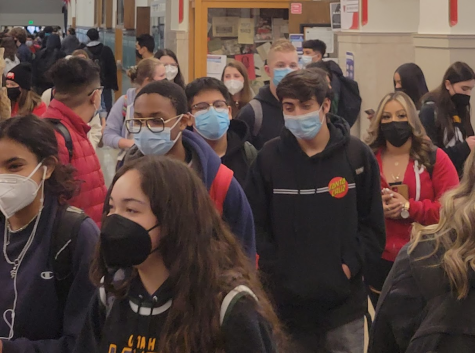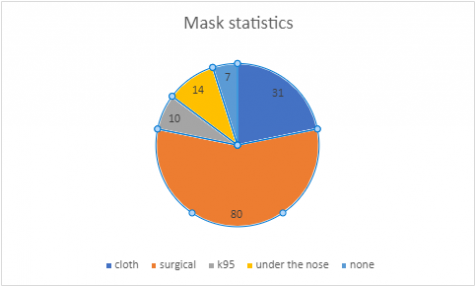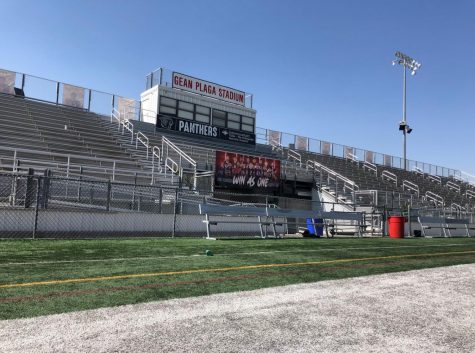Teaching to a Black Screen
January 22, 2021
Whether you are a teacher, a student, or a parent, everyone has had to adapt to online school this past year. So far, most people have found that this virtual learning environment makes teaching much harder. It’s especially difficult for teachers to engage with students when they are staring at thirty black squares on the screen. Unfortunately, this is a reality for many teachers at West High, who have shared their experiences with students not turning their cameras on during zoom classes.
In online classes, teachers have struggled to see if their students are understanding the material and if they’re getting through to them at all. Teachers say it is especially hard to gauge a student’s reactions when their camera is turned off. Ms Reitz-Larsen said, “It is hard to teach to a black screen and know if students are understanding what you are teaching.” Another West High teacher, Mr McFarland shared a similar sentiment: “I believe not having the camera on is the single biggest barrier to learning while school is online.”
But students not understanding the concepts isn’t the only problem teachers face. Some teachers say they have students who join class and then just leave the room. It’s hard to tell if students are “thinking about their answer, if they are playing games on their phones, or if they are even there in front of their computer” said Mr Lamming. With only a black rectangle to go off of, it is hard for teachers to tell if students are present, both physically and mentally. Having cameras on during class “makes students accountable for staying with the class” said Ms Pheiffer.
West High teachers had varying responses when asked how many of their students turned their cameras on. Some said that most of their students turn their cameras on in classes, but many others reported as few as 1 or 2 students per class with cameras on. When questioned, almost all teachers said they wished that more people would turn their cameras on during class.
Some teachers have even started incentivizing their students with extra credit for turning their cameras on. Ms Adams, a Language Arts teacher, says that she “started offering extra credit if they turn their cameras on, and now about a third of them do.” She added, “I wish I didn’t have to resort to ‘paying’ them to unmask themselves, but at least I can see them now.”
Not only is it harder for students to connect to the material they are being taught, but connecting to teachers and peers in online classes is equally as difficult. This barrier is heightened when students don’t turn their cameras on or participate in class.“It is very difficult to get to know my students with their cameras off,” Mr Lamming says. The lack of social connection is rough on teachers and students. Ms Nicholas observed that, “It’s also hard for students to feel like they know each other without being visible to others.”
So why do so many students not turn their cameras on? Well for one, students say it can be draining to keep the camera on all day. The idea of having to be on camera for up to 5-6 hours a day is unappealing to most students. Students have said they like the option of having their camera off and that “in the early morning especially, I wish I could have my camera off.”
Other students may simply feel uncomfortable with having their camera on or want their own privacy. Mary Chamberlin, a West High teacher, does not require her students to have cameras on, agreeing that students deserve their privacy. “I don’t feel it’s my place to bring a whole class into a student’s home,” she says, “I trust my students have their cameras off for good reason, but for my sanity I wish they’d turn them on.”
Another reason students do not turn their cameras on in class is because no one else is doing it. The lack of other students with cameras on in a class can make students feel intimidated to turn their cameras on and be the only one with a camera on. One student said, “It’s weird having everybody see your face but not see anyone else.” For students, it can be awkward to be the sole person with a camera on and many could feel self-conscious about this. Teachers have seen this play out in their classrooms as well. “Once I get one student to turn on the camera the rest follow the lead,” said Ms Nava.
Even though an end to this pandemic may be on the horizon with the new vaccination plan, teachers still encourage students to turn their cameras on during online classes for the extent of time we have left with online school. Online school has been tough on everyone this year, with both teachers and students experiencing “Zoom fatigue”. Ms Chamberlain sums up what we are all probably feeling at this point by saying that when we do go back to in-person school, “we’re all going to appreciate being together in ways we didn’t before.”


